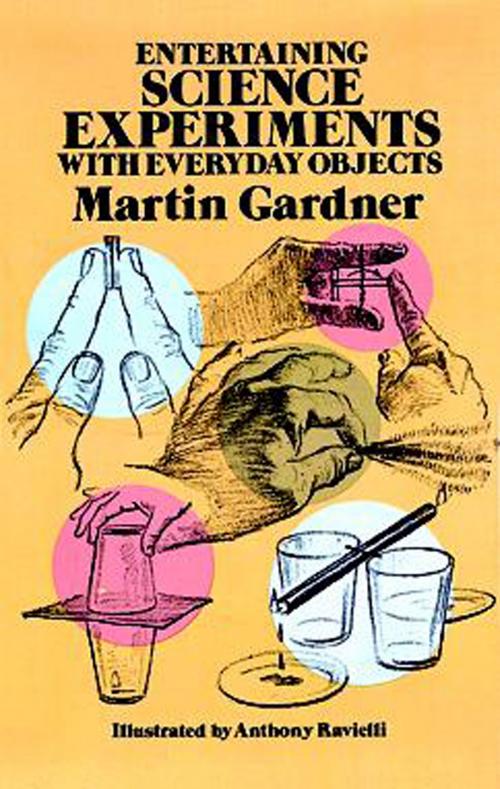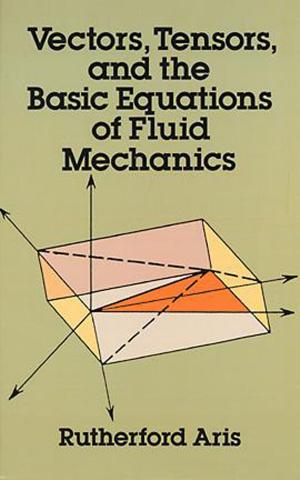Entertaining Science Experiments with Everyday Objects
Kids, Natural World, Experiments and Projects| Author: | Martin Gardner | ISBN: | 9780486319117 |
| Publisher: | Dover Publications | Publication: | June 10, 2013 |
| Imprint: | Dover Publications | Language: | English |
| Author: | Martin Gardner |
| ISBN: | 9780486319117 |
| Publisher: | Dover Publications |
| Publication: | June 10, 2013 |
| Imprint: | Dover Publications |
| Language: | English |
To Martin Gardner, seeing is not just believing — it is understanding. This fundamental rule has made him one of the most successful teachers and popularizers of science in America. With the simple instructions in this book and a few commonly available household objects, you or your child can easily learn even the most difficult scientific principles by directly experiencing how they work.
Gardner shows you how to re-create classic experiments with easily obtainable objects. Using just a flashlight, a pocket mirror, and a bowl of water, you can demonstrate the color composition of white light just as Newton did 300 years ago. With cardboard, colored paper, and wax paper you can perform "Meyer's experiment" with complementary colors. You need only a playing card, a spool, and a thumbtack to demonstrate Bernoulli's principle of aerodynamics. A soda bottle filled with water, a few paper matches, and a toy balloon elucidate Pascal's law governing pressure in liquids. And two drinking glasses, some matches, and a piece of wet blotting paper re-create a famous experiment, first performed in 1650 in Magdeburg, Germany, that dramatically reveals the force of ordinary atmospheric pressure.
In language simple enough to be easily understood by an 11-year-old, yet technically accurate and informative enough to benefit adults, and aided by Anthony Ravielli's clear illustrations, Gardner presents a splendid practical course in basic science and mathematics. While your child perplexes and delights his or her friends with a series of 100 amusing tricks and experiments, he or she is learning the principles of astronomy, chemistry, physiology, psychology, general mathematics, topology, probability, geometry, numbers, optics (light), gravity, static electricity, mechanics, air hydraulics, thermodynamics (heat), acoustics (sound), and inertia. This is a perfect refresher course for adults as well as an ideal introduction to science for youngsters.
"The experiments … are all clearly explained and unusually well illustrated." — Booklist.
To Martin Gardner, seeing is not just believing — it is understanding. This fundamental rule has made him one of the most successful teachers and popularizers of science in America. With the simple instructions in this book and a few commonly available household objects, you or your child can easily learn even the most difficult scientific principles by directly experiencing how they work.
Gardner shows you how to re-create classic experiments with easily obtainable objects. Using just a flashlight, a pocket mirror, and a bowl of water, you can demonstrate the color composition of white light just as Newton did 300 years ago. With cardboard, colored paper, and wax paper you can perform "Meyer's experiment" with complementary colors. You need only a playing card, a spool, and a thumbtack to demonstrate Bernoulli's principle of aerodynamics. A soda bottle filled with water, a few paper matches, and a toy balloon elucidate Pascal's law governing pressure in liquids. And two drinking glasses, some matches, and a piece of wet blotting paper re-create a famous experiment, first performed in 1650 in Magdeburg, Germany, that dramatically reveals the force of ordinary atmospheric pressure.
In language simple enough to be easily understood by an 11-year-old, yet technically accurate and informative enough to benefit adults, and aided by Anthony Ravielli's clear illustrations, Gardner presents a splendid practical course in basic science and mathematics. While your child perplexes and delights his or her friends with a series of 100 amusing tricks and experiments, he or she is learning the principles of astronomy, chemistry, physiology, psychology, general mathematics, topology, probability, geometry, numbers, optics (light), gravity, static electricity, mechanics, air hydraulics, thermodynamics (heat), acoustics (sound), and inertia. This is a perfect refresher course for adults as well as an ideal introduction to science for youngsters.
"The experiments … are all clearly explained and unusually well illustrated." — Booklist.















